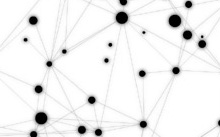The Object Oriented Web - Part 3 - Social Networks
Published 16 years ago by Manuel Vila
 Once again, the main idea behind the social network comes from a reversal process. We're dealing with an approach focused on the people (user-centric) and not on the applications allowing us to produce various data (text with blogs, pictures on Flickr, videos on YouTube, etc.). Rather than indicate to our contacts the numerous RSS feeds representing our "digital life", we are going to point at a unique address (our OpenID) whereby they will have access to any shared data. Even better, they will be able to add us in their contact list in order to automatically receive our new data (our "lifestreams"). To draw a parallel between an existing tool, adding an RSS feed to an aggregator like Google Reader comes down to adding a contact in our social network. But there is a major difference because this new approach simplifies things a lot while introducing many new fascinating possibilities.
Once again, the main idea behind the social network comes from a reversal process. We're dealing with an approach focused on the people (user-centric) and not on the applications allowing us to produce various data (text with blogs, pictures on Flickr, videos on YouTube, etc.). Rather than indicate to our contacts the numerous RSS feeds representing our "digital life", we are going to point at a unique address (our OpenID) whereby they will have access to any shared data. Even better, they will be able to add us in their contact list in order to automatically receive our new data (our "lifestreams"). To draw a parallel between an existing tool, adding an RSS feed to an aggregator like Google Reader comes down to adding a contact in our social network. But there is a major difference because this new approach simplifies things a lot while introducing many new fascinating possibilities.
Continue reading The Object Oriented Web - Part 3 - Social Networks

 The Curse of Knowledge: the more you know, the more difficult it is for you to communicate knowledge. When we know something, we can hardly imagine not knowing it. The more we learn about something, the more it becomes even harder for us to think of not knowing it. It is generally difficult for experts (who know much) to explain their expertise to laymen (who know little) because experts have to try hard to imagine the scenario when they were not experts. This is the Curse of Knowledge.
The Curse of Knowledge: the more you know, the more difficult it is for you to communicate knowledge. When we know something, we can hardly imagine not knowing it. The more we learn about something, the more it becomes even harder for us to think of not knowing it. It is generally difficult for experts (who know much) to explain their expertise to laymen (who know little) because experts have to try hard to imagine the scenario when they were not experts. This is the Curse of Knowledge.
Recently Commented Blog Entries